
The Beautyberry shrub is fairly well known to gardeners in their native range.
They are found in the south east of North America, from Texas, through Florida, and north to Oklahoma and Arkansas.
In those regions, these stunning light purple berries really live up to their name. They bring bursts of color to rich woodland and thickets, and have found a place in many gardens.
Beautyberry is far less well known outside of these regions, but the American Beautyberry is hardy down to zone 7, and sometimes zone 6.
It could find a place in many gardens, even outside of its native range.
There are other beautyberry varieties that can be grown – such as the Japanese beautyberry (some more tolerant of colder climate zones). However, it is the American variety that we will focus on in this article.
What Is American Beautyberry?
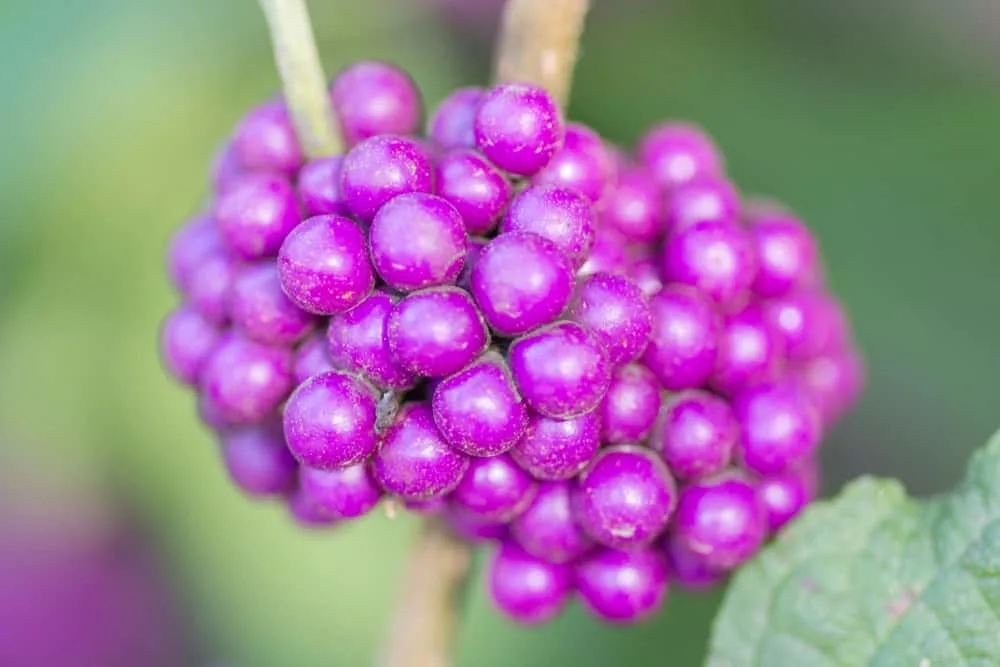
Callicarpa americana is deciduous shrub that grows slowly to an eventual height of around 1.8m.
It is a hemaphrodite (with both male and female organs on the same plant). It needs cross-pollination for good fruit production (so should not be grown in isolation).
The blooms appear between June and July. They are lavender colored, and rather inconspicuous, but do attract beneficial wildlife.
It is the vivid, light-purple berries that follow the blooms, however, which provide the greatest value.
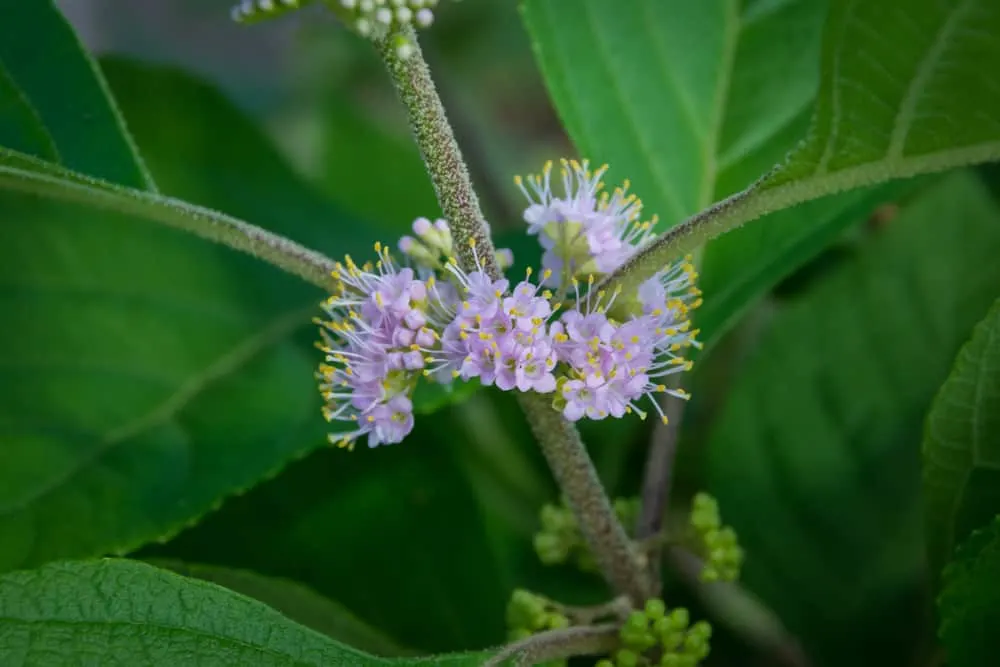
Why Grow Beautyberry in Your Backyard?
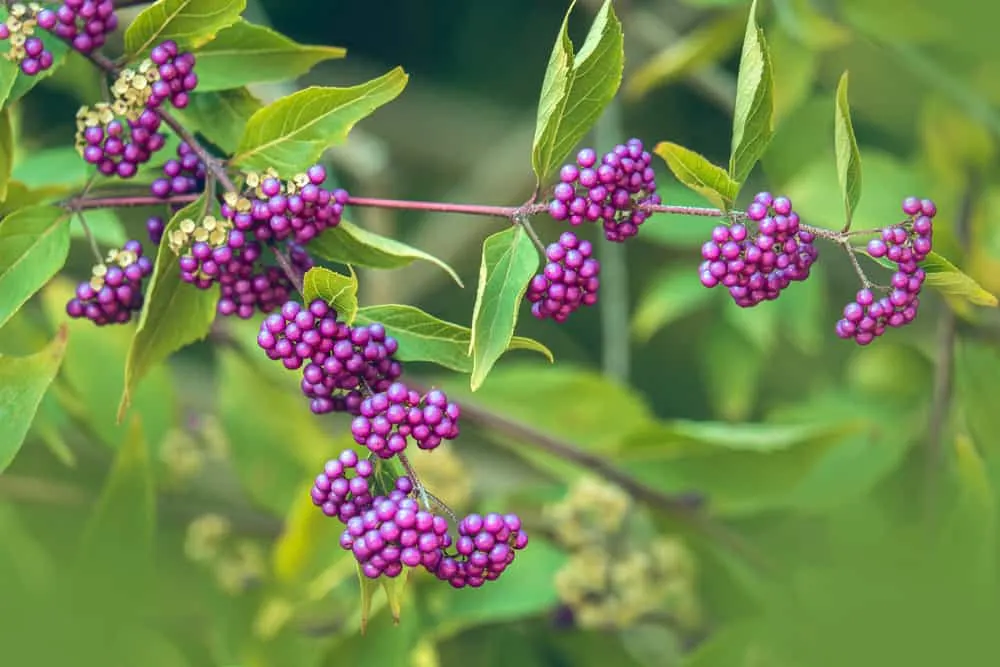
There are a range of reasons to grow Callicarpa americana in your garden.
They are grown not only because of their attractive berries, which can have a great ornamental worth.
You should also consider growing them in your backyard because:
- They can add structure to a formal or informal garden border.
- Their roots help to fix friable soil and prevent erosion.
- They are remarkably pest tolerant (and notably resistant to honey fungus).
- Native plants in the US, they are particularly good for attracting birds to your garden.
- They also attract butterflies.
- And make a great treat for backyard chickens.
- The leaves are a natural mosquito repellent.
- People can eat them too – the berries, which are around 6mm in diameter, are bland to sweet, and juicy. They can be eaten raw (though some do not like the taste) and can also be made into a tasty jelly.
Where to Grow Beautyberry
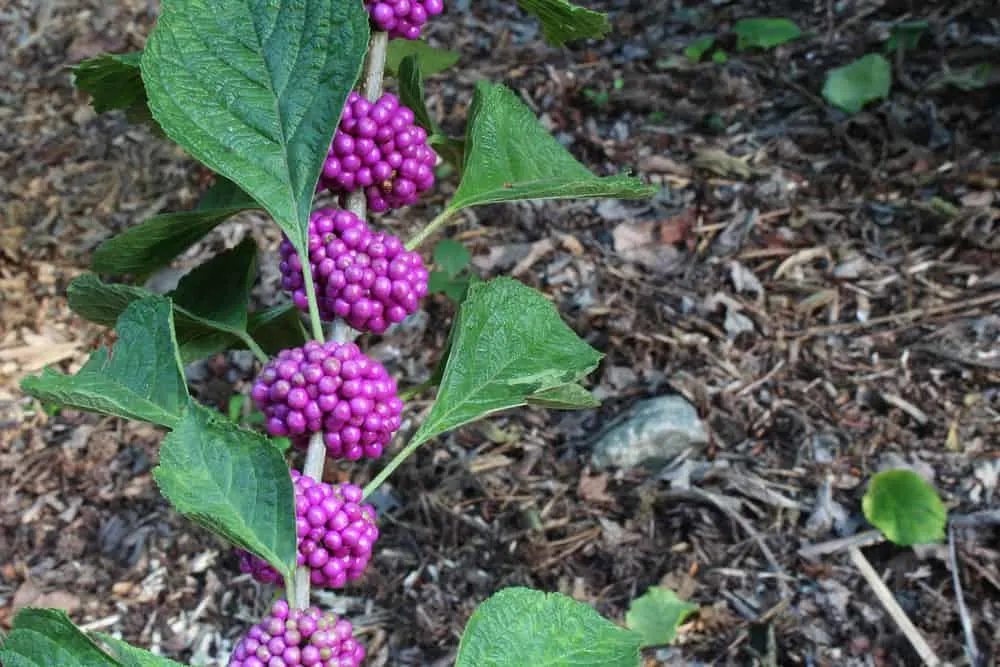
Beautyberry will fruit best when planted in an area of partial shade – such as in a glade, beneath the dappled shade of a deciduous tree, or close to the fringes of a forest or woodland garden. However, it can also do well where no shade is available, as long as the soil does not dry out too much.
The plants will grow best in well-drained but moist soil – ideally a loamy (medium) one. They are not too fussy when it comes to soil pH.
Growing Beautyberry…
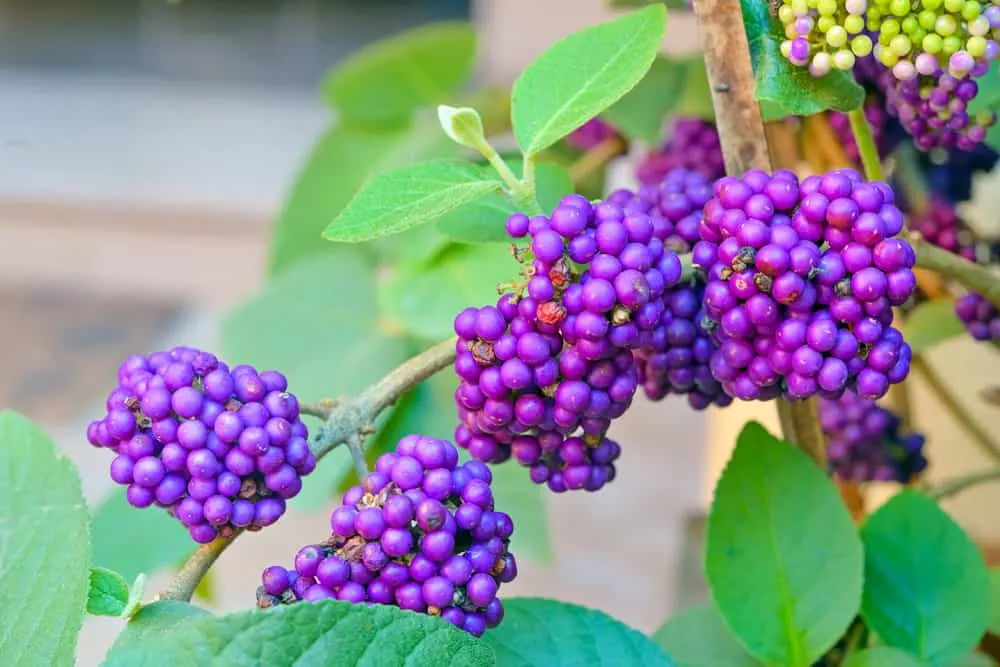
From Seed
Beautyberry seeds should be sown in early summer for transplanting outside in fall, or sown in late fall to transplant in spring.
Seeds should only just be covered with your growing medium. The seeds are fairly slow to germinate, but should germinate within 1-3 months at 65F.
When they are large enough to handle, seedlings can be pricked out into individual pots.
They can be transplanted outside in either spring or fall.
You can purchase beautyberry seeds from here.
From Cuttings
Beautyberry can also be propagated from cuttings. Cuttings of current season’s growth can be taken in early spring. Semi-ripe cuttings of around 10cm long can also be taken in July or August.
Buy Established Plants
If you’d rather purchase established beautyberry plants for instant gratification in your backyard, then Nature Hills Nursery offer three varieties of mature beautyberry shrubs here.
Caring for American Beautyberry
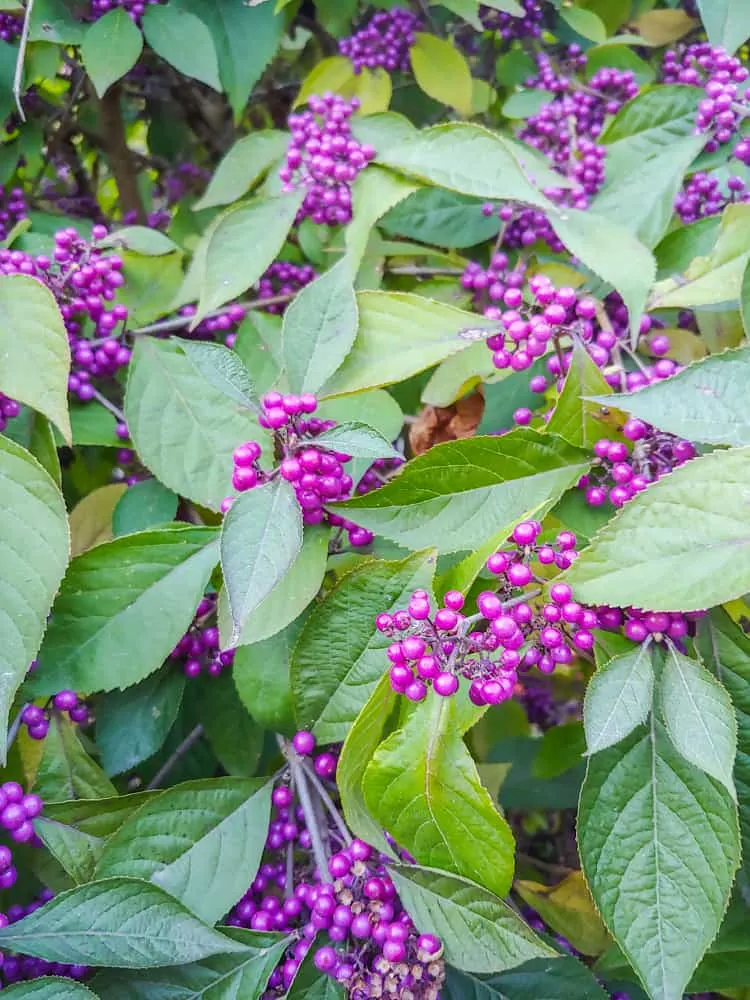
The plant needs more water in a sunnier spot. In the shade of other plants or trees, in suitable moist sun, it should need little watering. However, it should be given slow, deep watering during particularly dry spells. An inch of water per week is ideal, but they can do fine in drier conditions.
Callicarpa americana is an ideal low-maintenance plant. They do not need to be fertilized. In fact, over-feeding, especially with a nitrogen-rich feed can actually be detrimental, as it will result in fewer berries.
Beautyberry blooms on new wood. Pruning is not always required, but can be undertaken (for shaping and form) in late winter if desired. At the northern end of their range, the plants are sometimes pruned down to within a foot of the ground each year, just before spring arrives.
Harvesting & Using Beautyberries
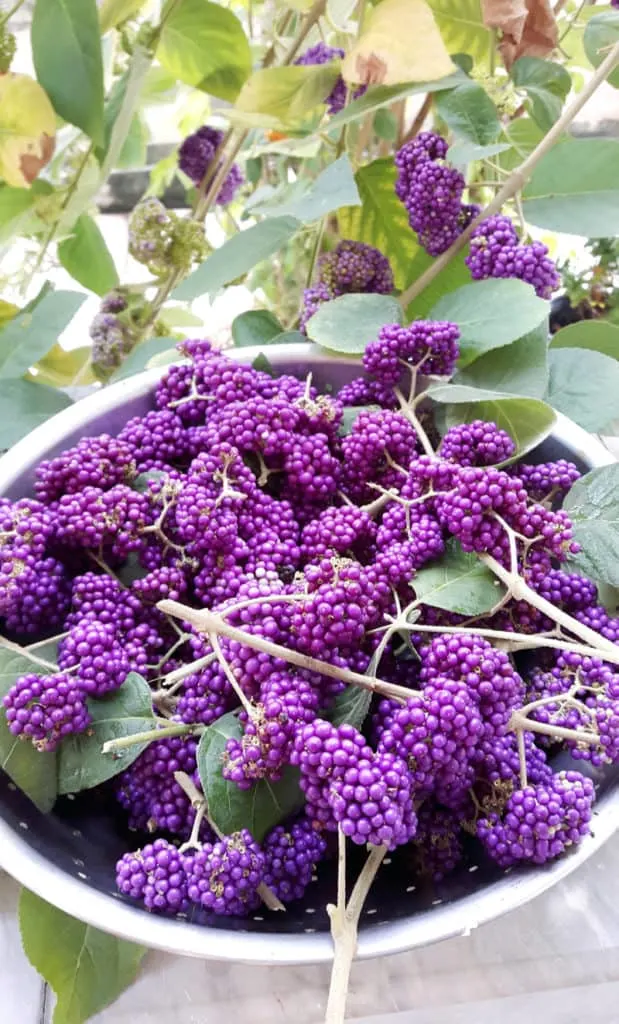
As mentioned above, the berries of Callicarpa americana are edible. Here are a few recipes to help you make best use of the plants:
Beautyberry Jelly
To make a beautyberry jelly – popular in Florida – you can:
- Harvest and wash the berries.
- Add six cups berries, and 8 cups of water, to a large preserving pan.
- Bring the mix to a boil and cook for around 20 minutes.
- Strain the mixture through a muslin or cheesecloth, retaining the reddish fluid (put the pulp that is left on your compost heap, or give it to chickens).
- Return the juice to your clean preserving pan, add 6 cups of sugar, 3 tbsp lemon juice, and pectin. The pectin helps the jelly set.
- Bring the mix to a boil and keep it at a rolling boil. Test the jelly on a cool spoon or saucer to see whether it will pass the ‘wrinkle test’.
- Once it does, pour into sterilized jars, seal the lids, and keep in a cool place.
See the recipe and procedure for beautyberry jelly here.
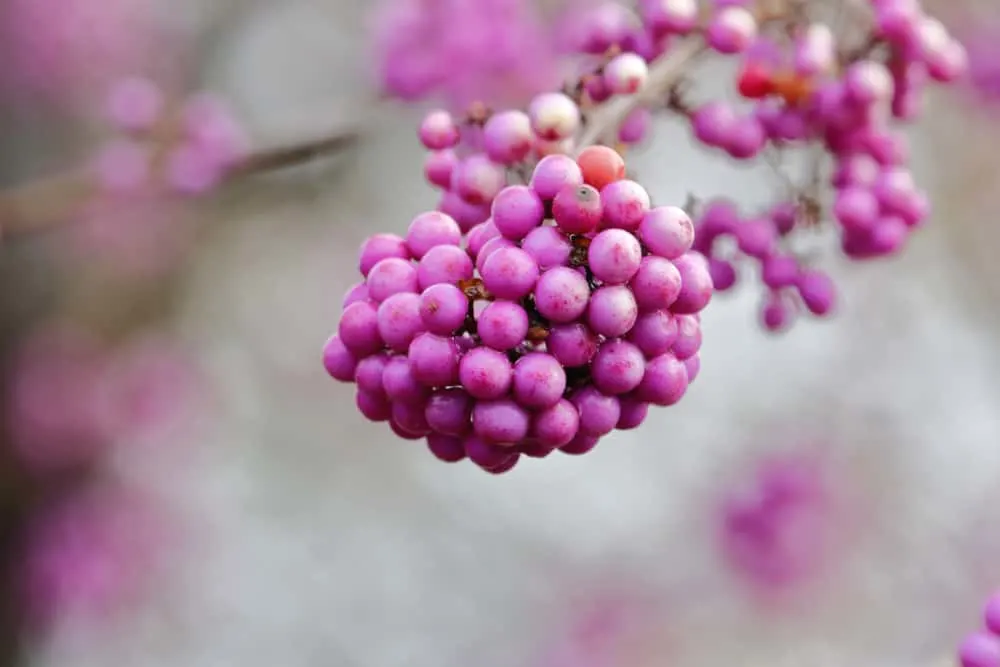
Beautyberry As A Mosquito Repellent
Both the leaves and the berries of Callicarpa americana have been used as an insect repellent by native Americans and pioneers.
Mashed up, and rubbed onto the skin, they are effective at repelling mosquitoes. USDA research has backed up this claim.
You can make a homemade salve that will serve as a mosquito repellent by following the recipes on one of the links below:
Natural Beautyberry Bug Repellent @ thegrownetwork.com
Natural Mosquito Repellent @ txnativeplants.org
However you choose to use beautyberries, however, be sure to leave some for the birds and other wildlife. They are useful for humans, but these are one of those plants that are most useful when left in your garden to boost biodiversity and create a natural balance in the ecosystem.
Want to add an established beautyberry shrub to your backyard? You can purchase mature beautyberry plants from Nature Hills Nursery here.
